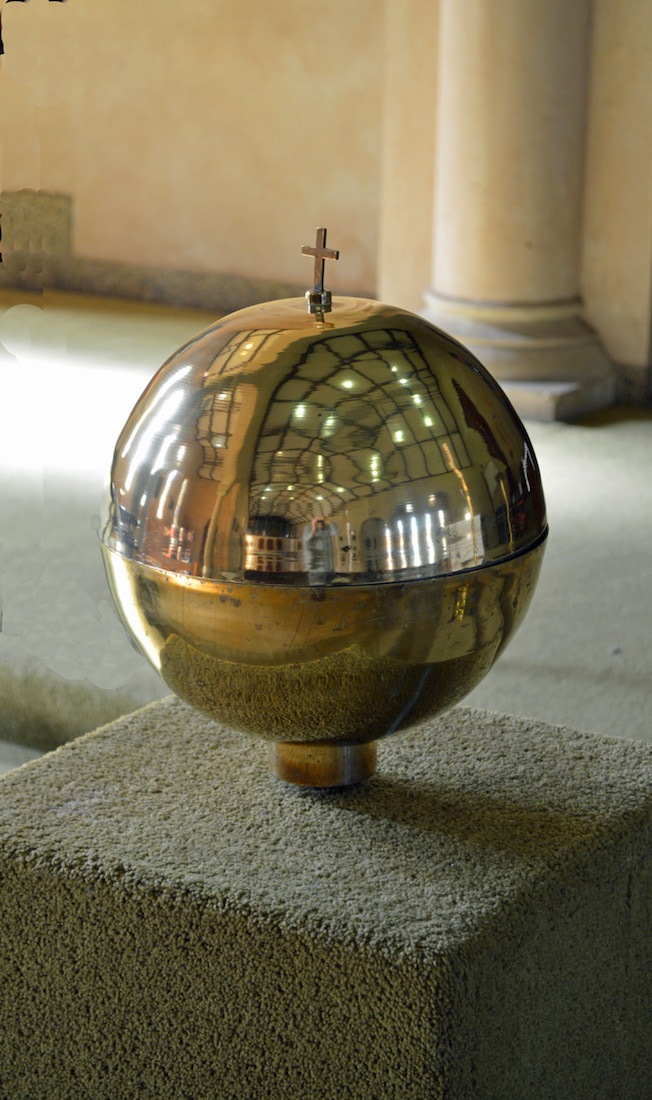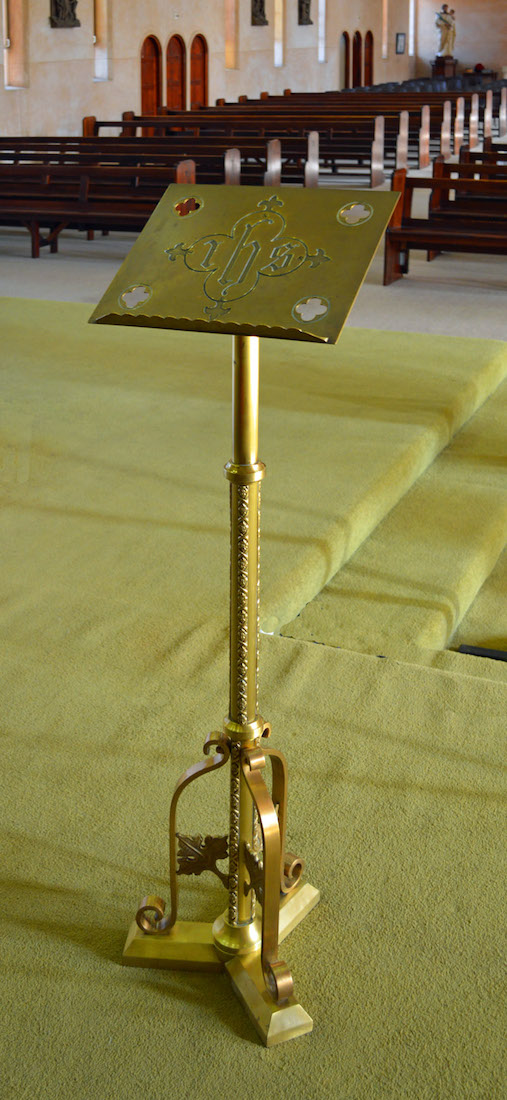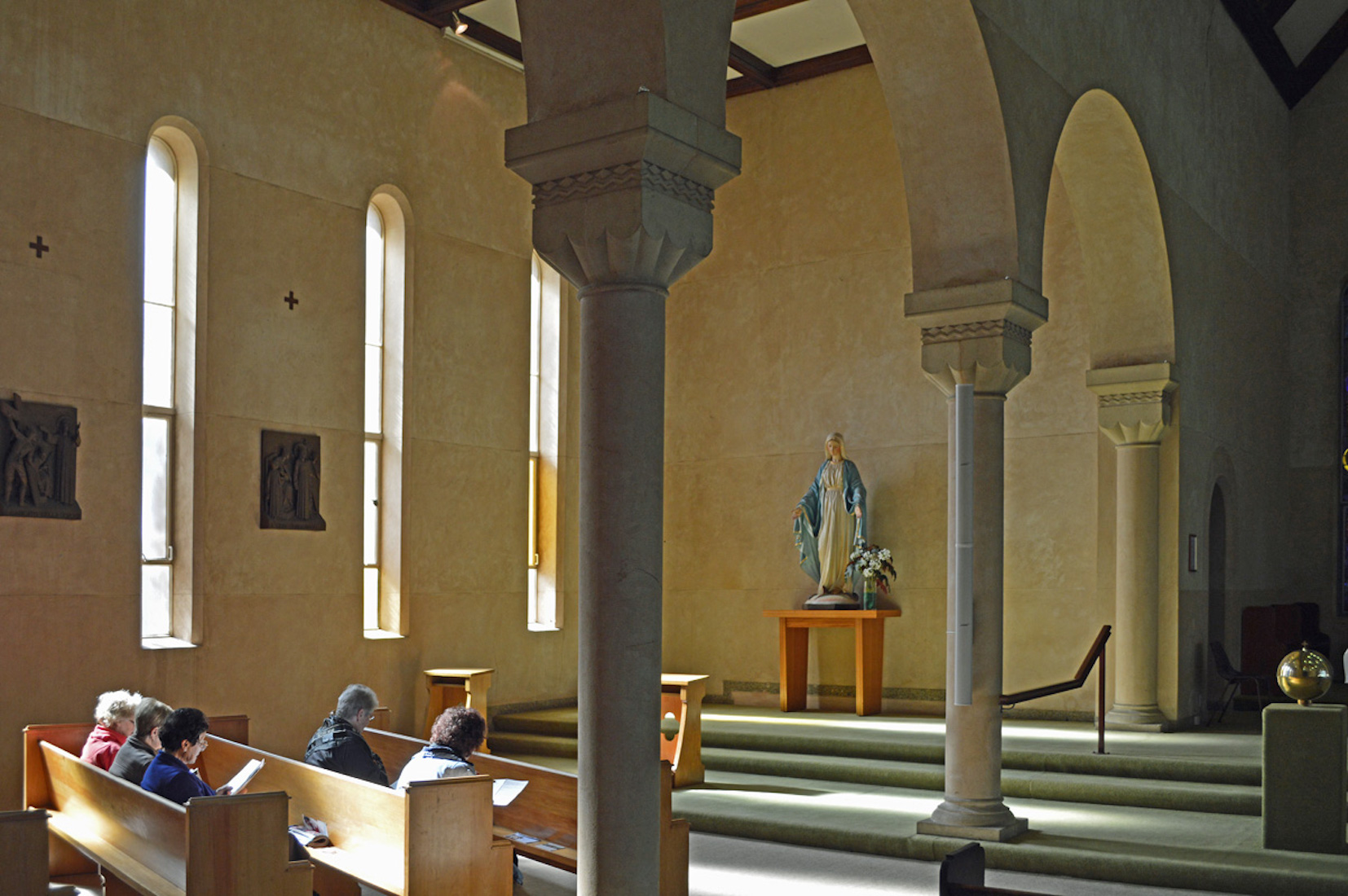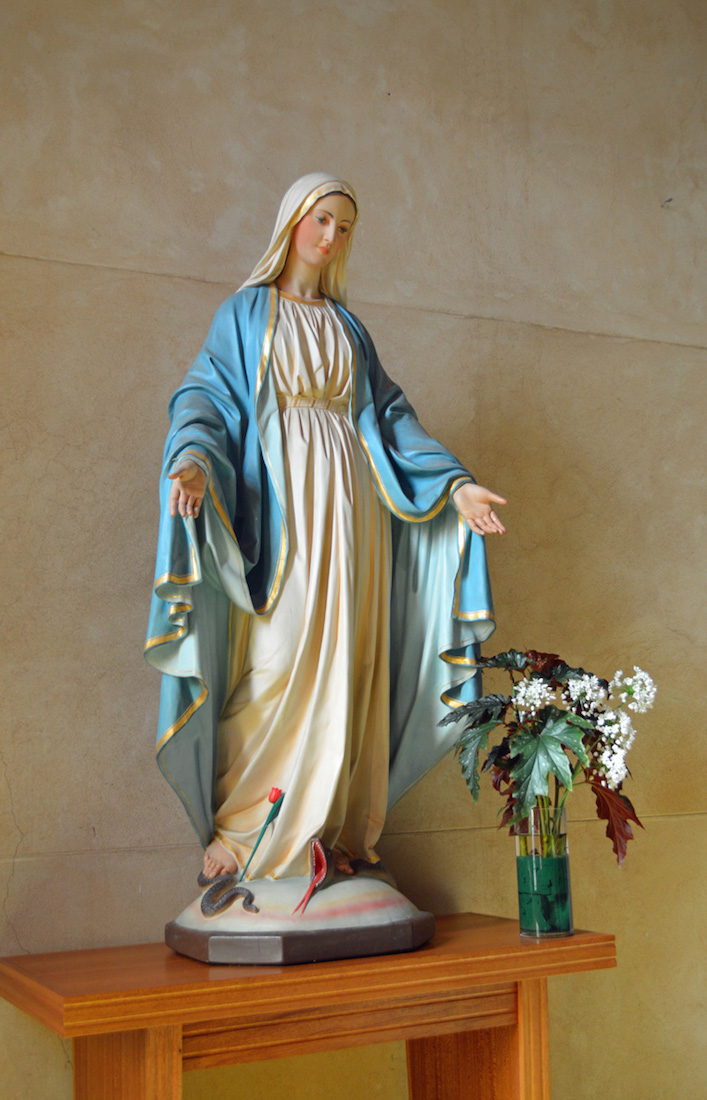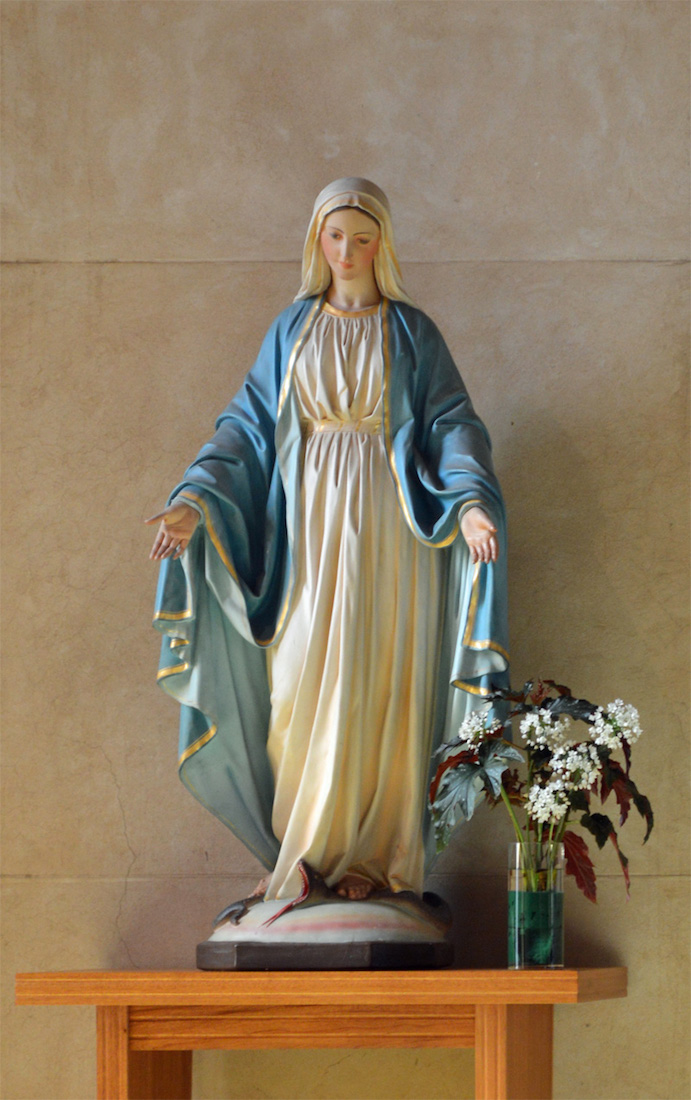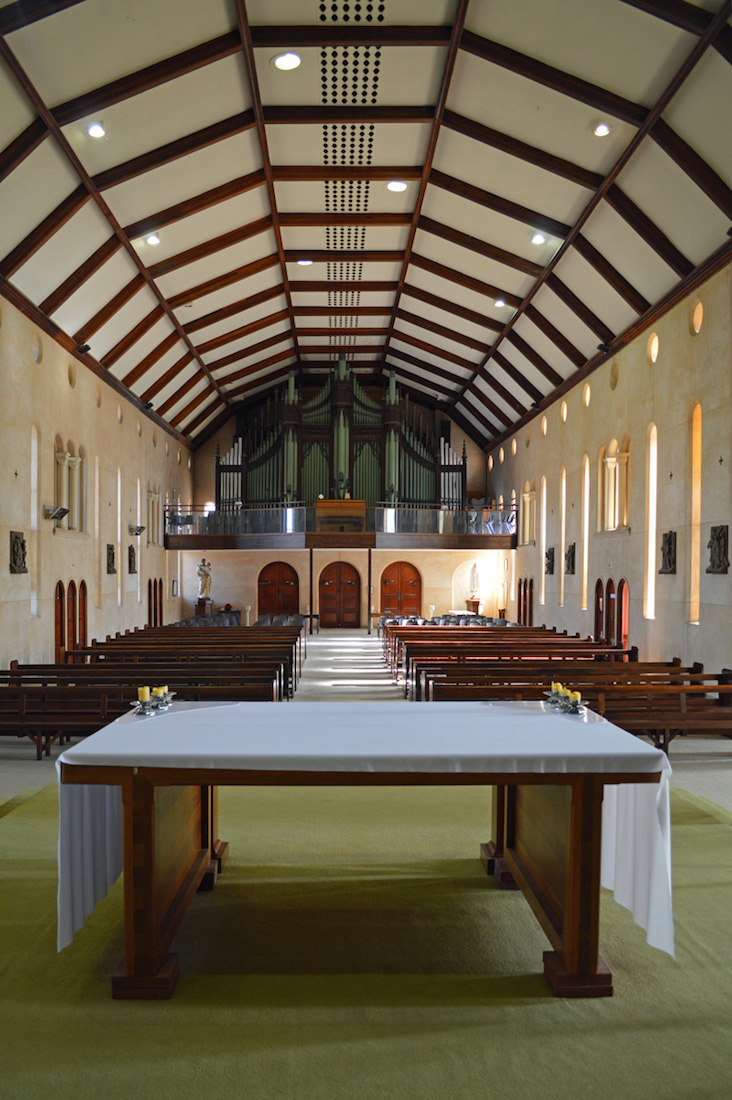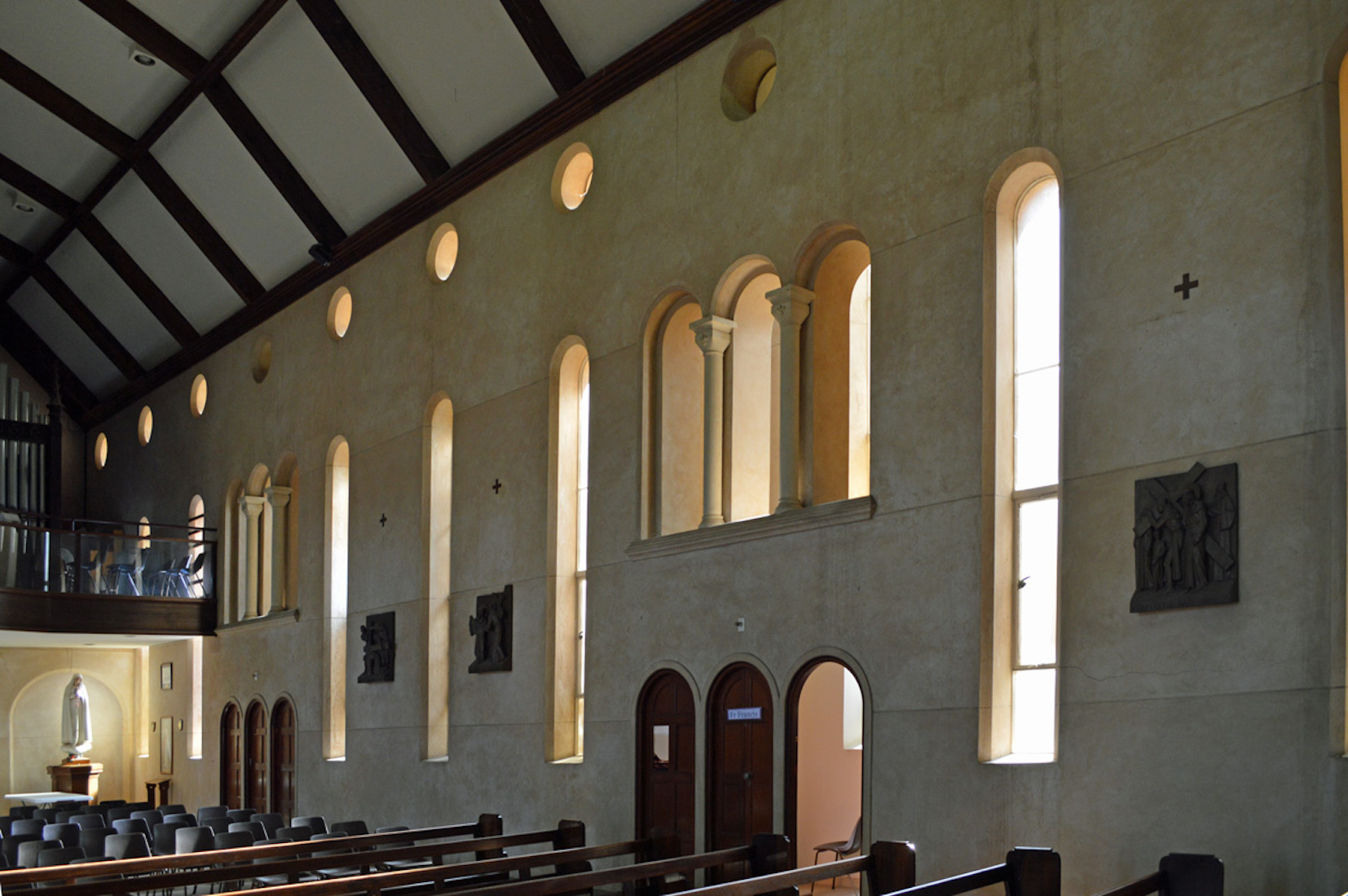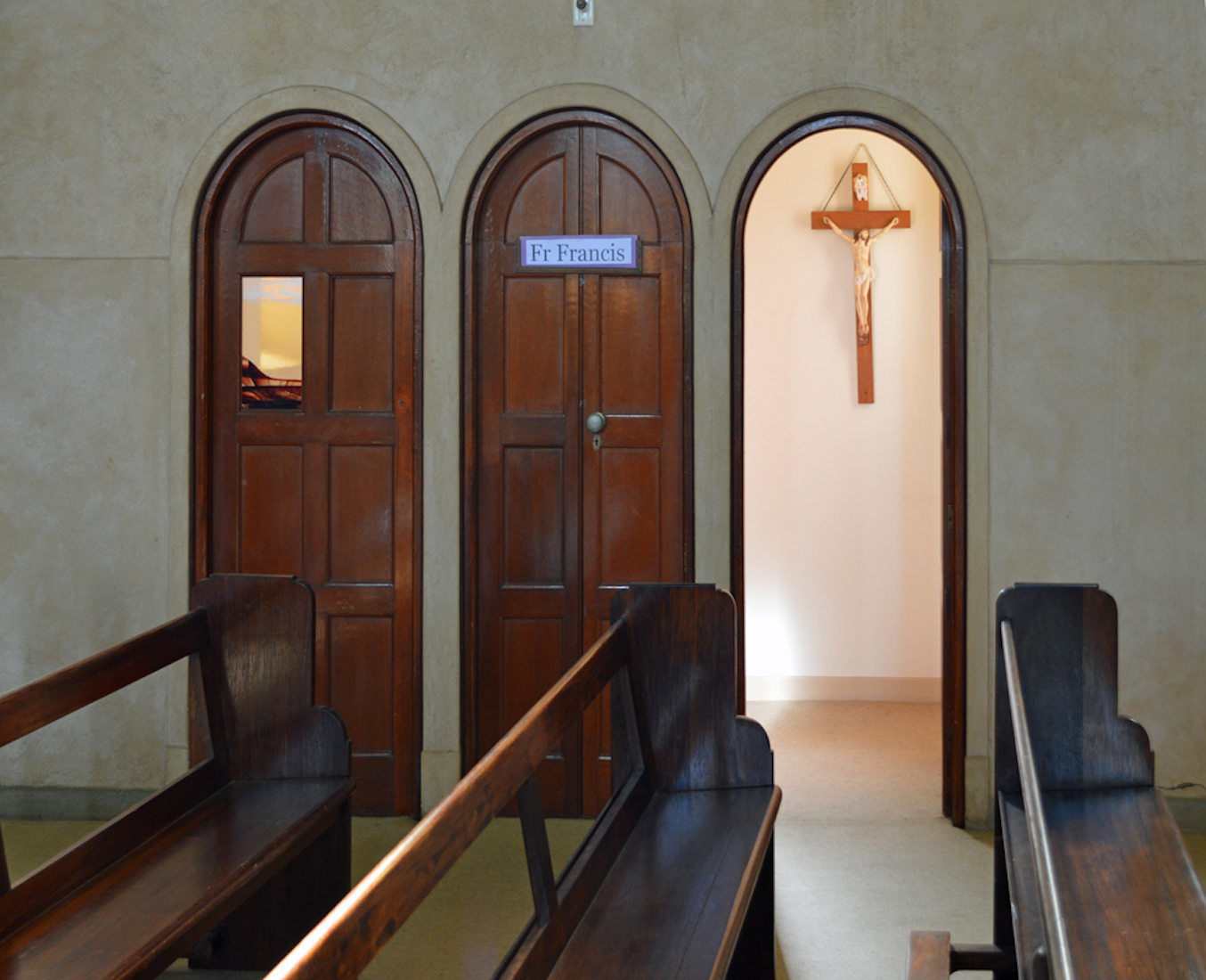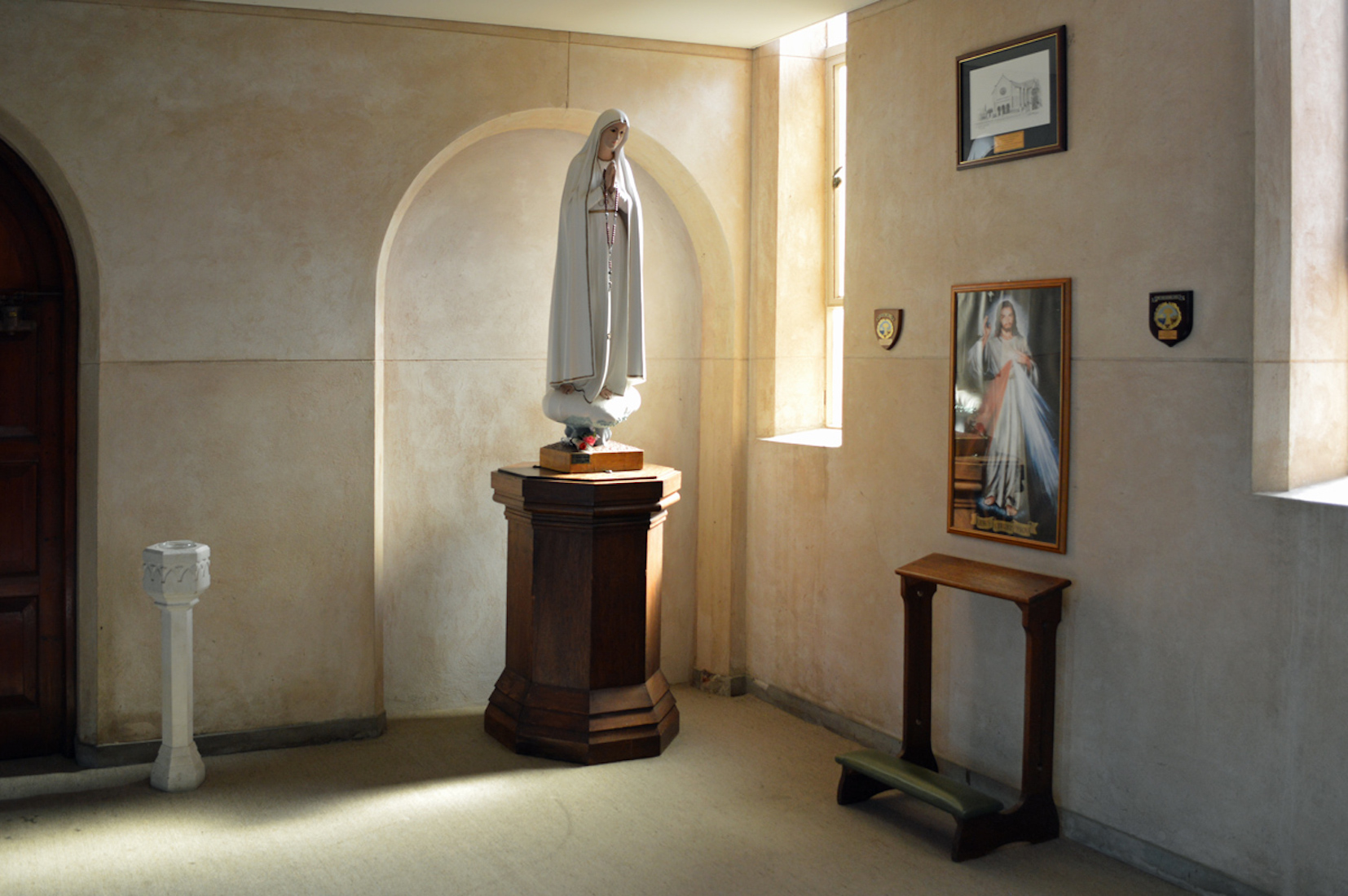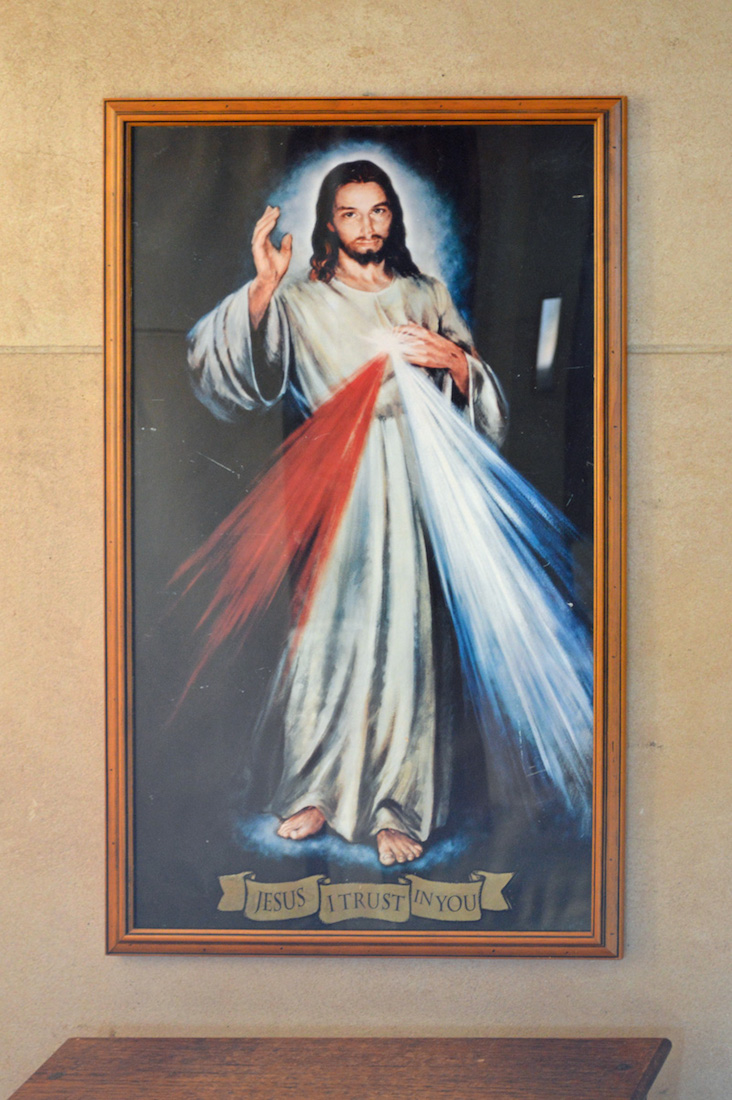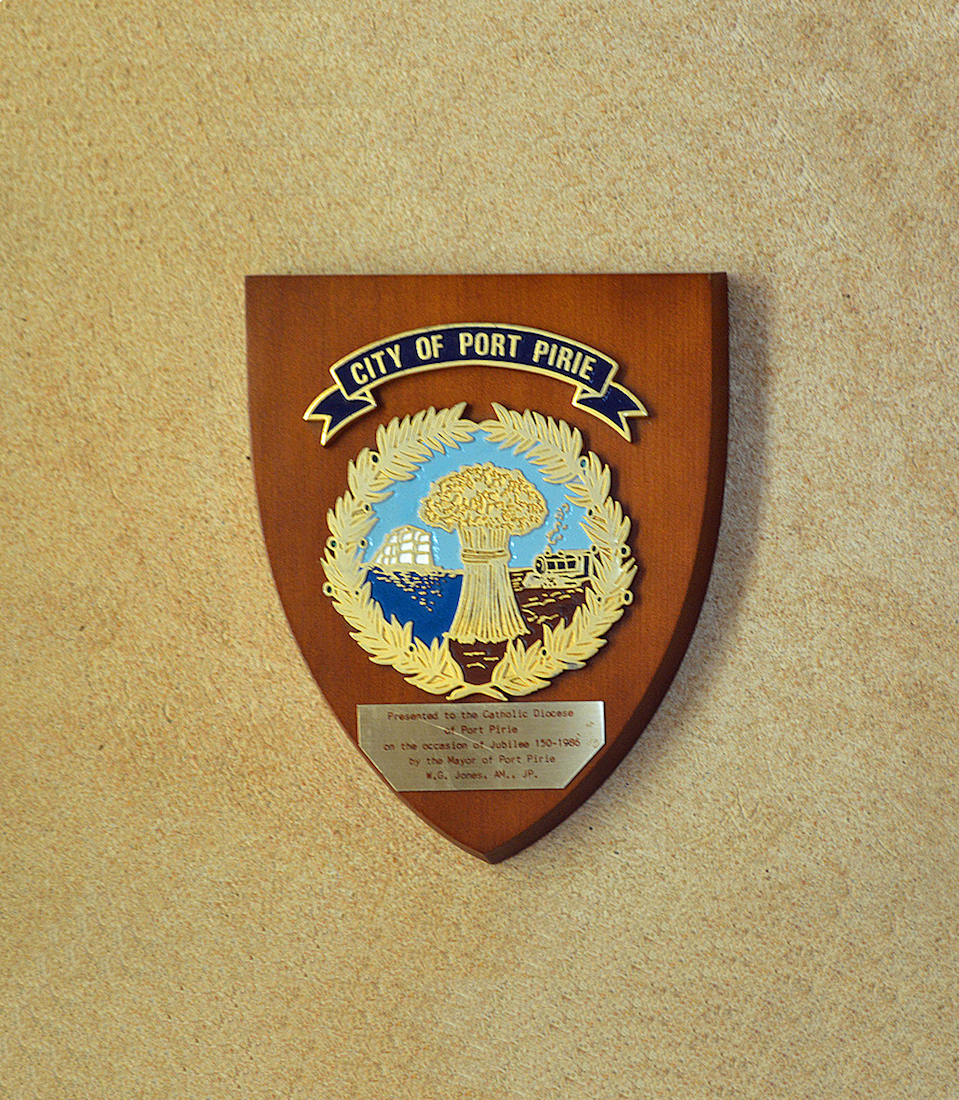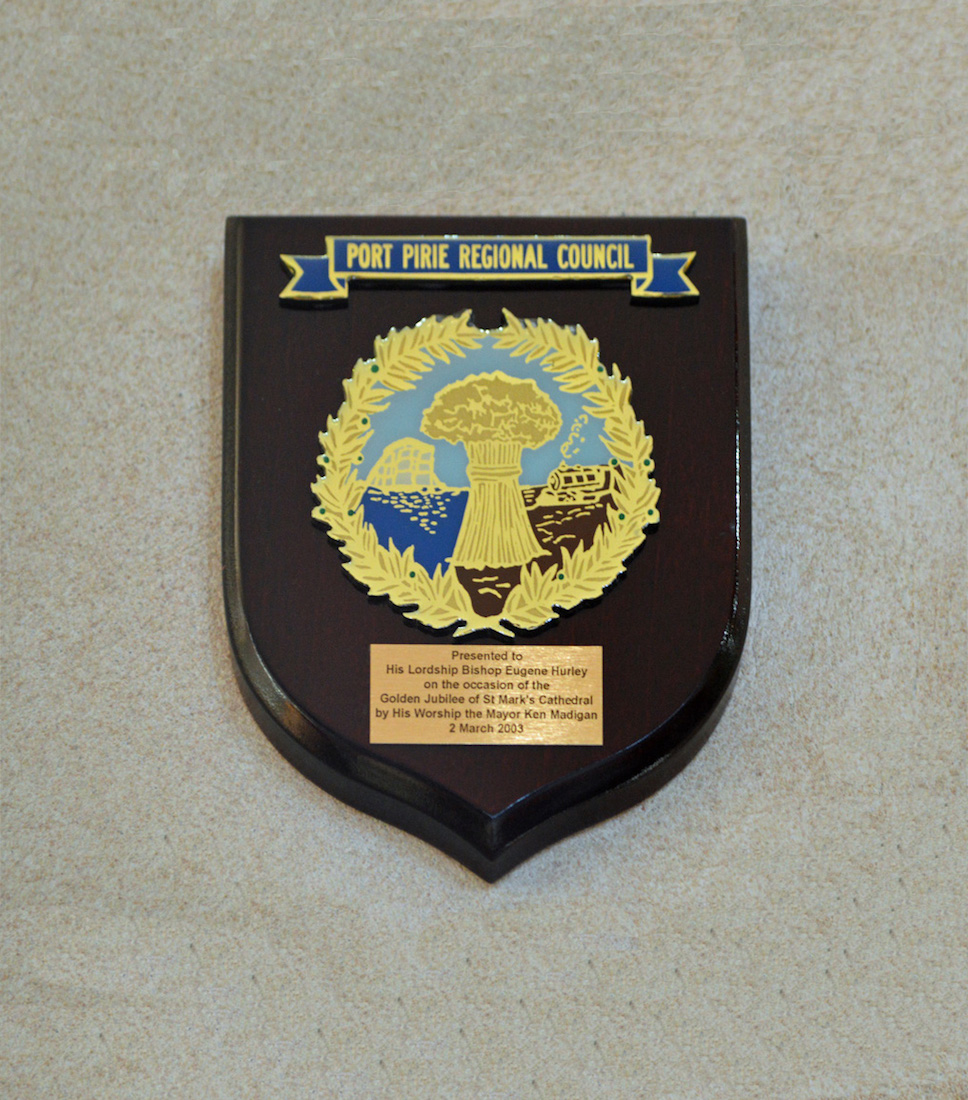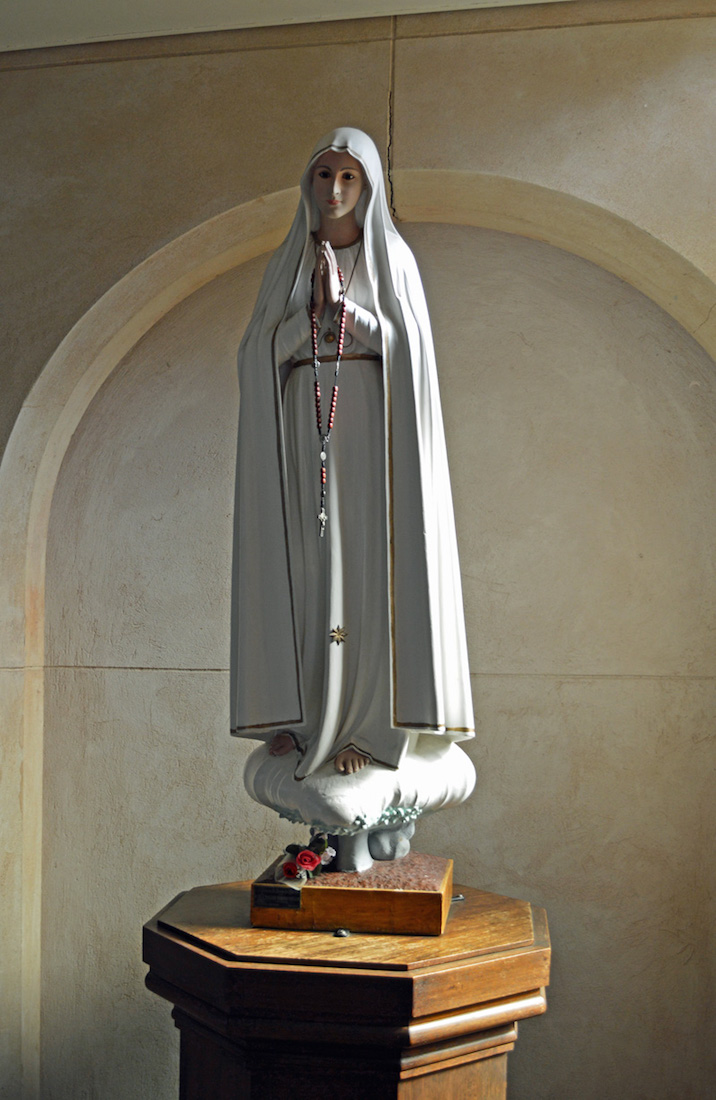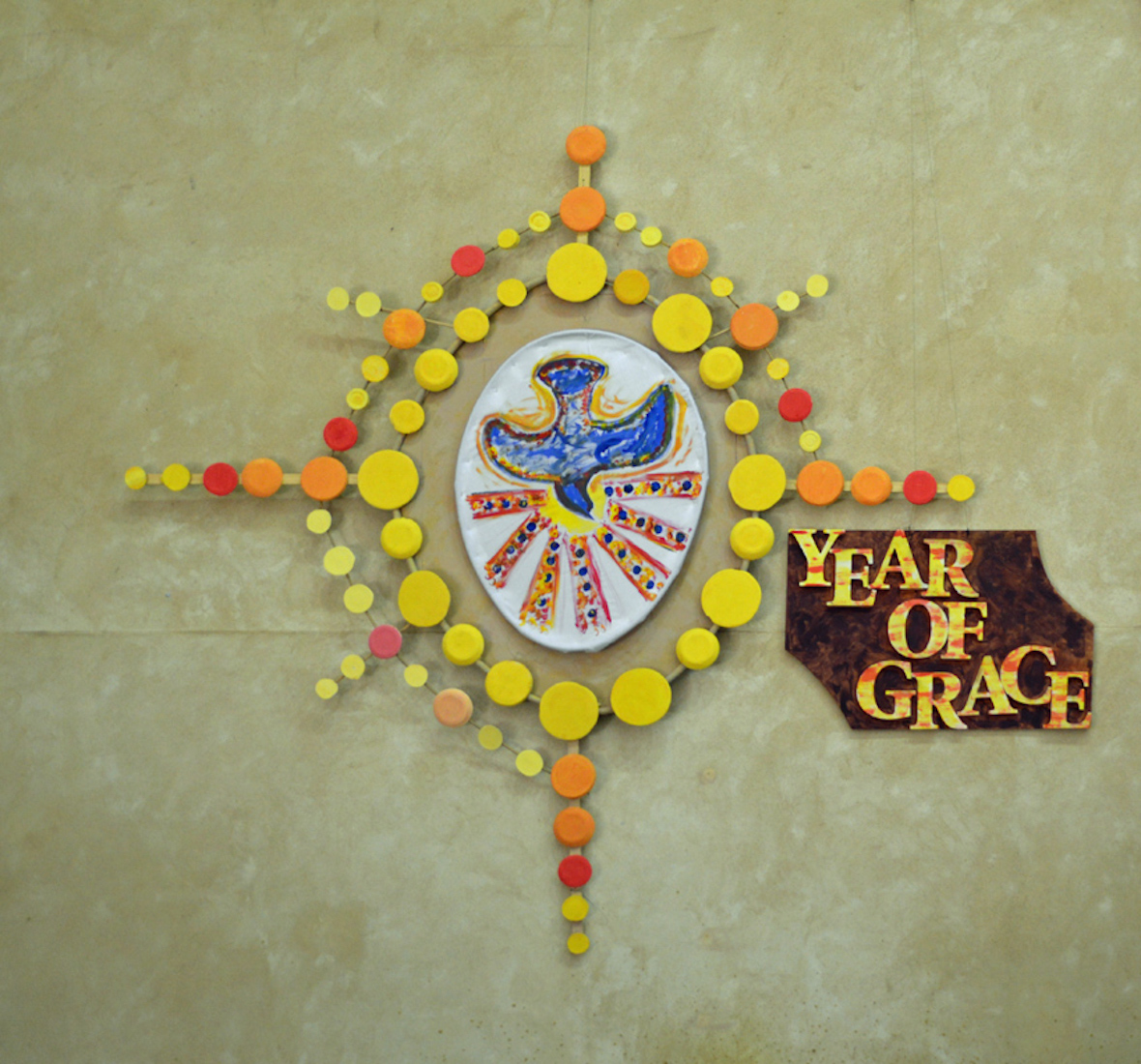
The Year of Grace was an invitation to the Catholic Church in Australia to undertake a spiritual journey, a time of listening to the Spirit, a space to recognise God’s grace in our lives, and to encounter Jesus afresh. It ran from Pentecost 2012 to Pentecost 2013. In summary, The Year of Grace was not a program or a series of events but rather a call to prayer and listening to the Spirit. It was called to be a time: • to seek an experience of Jesus • to name and claim grace in our lives • to be attentive to the many and various signs of Christ’s presence in our world • to heal our relationships • to grow in wholeness. PLAN
42. CANDLESTICKS

To one side of the sanctuary stands a small credence table bearing a sloping Bible support, and two candlesticks. The elements of the Eucharist are placed on the credence table before they are consecrated.
43. ORB
Near the front of the sanctuary stands the orb and cross. The globus cruciger (Latin, ‘cross-bearing orb’) is an orb topped with a cross, a Christian symbol of authority used throughout the Middle Ages and even today on coins, iconography and royal regalia It symbolizes Christ's dominion over the world.
44. SANCTUARY LECTERN
Also standing in the sanctuary area is this brass lectern with an IHS (Jesus) insignia.
45. PASCHAL CANDLE
There is also a paschal candle. The flame of the paschal candle symbolizes Christ as light of the world and his presence in the midst of his people. The paschal candle is sometimes referred to as the ‘Easter candle’ or the ‘Christ candle’. The term ‘paschal’ comes from the word pesach, which in Hebrew means ‘passover’. The tall white candle in many ways signifies the Divine pillar of cloud by day and the pillar of fire by night that led the Israelites in their Exodus from slavery in Egypt.
47. MADONNA
As the mother of Jesus, Mary has a central role in the Roman Catholic Church. The church’s veneration of her as the Blessed Virgin Mary has grown over time both in importance and manifestation, not only in prayer but in art, poetry and music.
48. MADONNA II
We notice that Mary has her foot on a snake. In the Garden of Eden, the Serpent (Satan) tempted Eve with the forbidden fruit. When Eve ate the fruit, she and all her descendants were cursed with Original Sin. In Catholic theology, the Virgin Mary was conceived without Original Sin. Mary, being free from sin, was in perfect condition to give birth to Jesus. Therefore Mary (Jesus!) conquered sin and the serpent.
49. SACRED HEART
At the back of the Lady Chapel in the North transept stands a statue of the Sacred Heart – rather alone and forlorn I felt. Devotion to the Sacred Heart is one of the most widely practiced and well-known devotions, taking Jesus' physical heart as the representation of his divine love for humanity. The devotion especially emphasizes the unmitigated love, compassion, and long-suffering of the heart of Christ towards humanity. The origin of this devotion form is derived from a French Roman Catholic nun, Marguerite Marie Alacoque, who said she learned the devotion from Jesus during a mystical experience.
50. STATION IV
We now come to the Station of the Cross IV, in which Jesus meets his mother. The Gospels do not tell of an encounter between Jesus and Mary, his mother, on the route to Calvary, although they do describe her presence at the place of execution. However, such a meeting has long been imagined in the traditional commemoration of the Way of the Cross.
51. NAVE LOOKING WEST
We are about to continue our walk along the North wall of the nave, but first we step back to the sanctuary and look back down the Cathedral. Points of interest we shall encounter are the first confessional on the right, several items in the North West corner, and of course the wonderful organ in the West balcony.
52. NORTH NAVE
Here is a closer view of the North nave wall ...
53. CONFESSIONAL
The door of the first confessional we come to is open, and there is a view of this crucifix with the traditional INRI sign pinned at the top. Prayer in front of a crucifix is often part of devotion for Christians, especially those worshipping in a church, but also privately.
54. CRUCIFIX
During the Middle Ages small crucifixes, generally hung on a wall, became normal in the personal cells first of monks, then all clergy, followed by the homes of the laity, as crucifixes became cheap enough for the average person to afford. By the 19th century displaying a crucifix somewhere in the general reception areas of a house became typical of Catholic homes.
55. NORTHWEST NAVE
There are several items in the North West nave. At left we see a pedestal with a font for holy water, at centre a figure in prayer, and at right a sketch of St Mark’s Cathedral above a framed picture of Jesus, with two small crests, one on either side.
56. JESUS I TRUST IN YOU
‘The Divine Mercy’ painting by Adolf Hyła (1943) is a depiction of Jesus based on the devotion initiated by Saint Faustina Kowalska. Jesus is shown raising his right hand in blessing, and pointing with his left hand on his chest from which flow forth two rays: one red (the blood of Jesus) and one white (the water). The depiction contains the message ‘Jesus, I trust in You!’ (Polish: Jezu ufam Tobie). The whole image is symbolic of charity, forgiveness and love of God, referred to as the ‘Fountain of Mercy’. According to the diary of St Faustina, the image is based on her 1931 vision of Jesus.
57. CITY SHIELD
On either side of the ‘Divine Mercy’ picture is a shield bearing a crest: the same crest, relating to the history of Port Pirie. The crest at left bears the inscription: ‘Presented to the Catholic Diocese of Port Pirie on the occasion of Jubilee 150 – 1986 by the Mayor of Port Pirie W. G. Jones AM., JP.’
58. COUNCIL SHIELD
The inscription of the crest at right reads: ‘Presented to His Lordship Bishop Hurley on the occasion of the Golden Jubilee of St Mark’s Cathedral by His Worship the Mayor Ken Madigan 2 March 2003.’
59. OUR LADY OF FÁTIMA
In the corner of the nave stands this statue of Our Lady of Fátima. Our Lady of Fátima is a title for the Virgin Mary due to her reputed apparitions to three shepherd children at Fátima, Portugal on the thirteenth day of six consecutive months in 1917. The title of Our Lady of the Rosary is also sometimes used to refer to the same apparition because the children related that the apparition called herself the ‘Lady of the Rosary’. It is also common to see a combination of these titles, i.e. Our Lady of the Rosary of Fátima.
60. ORGAN
Finally, as we complete our tour of St Mark’s Cathedral, we turn our attention to the West wall with its great organ. In 1894, Josiah Eustace Dodd bought the Adelaide organ building business of George Fincham. In 1901 the firm built the Elder Hall organ, with 32 stops over three manuals and pedals using mechanical and pneumatic action. It was rebuilt by Dodd in 1934, enlarged to 51 stops and converted to electro-pneumatic action throughout. Around the mid-70s, this organ was installed here at St Mark’s.


